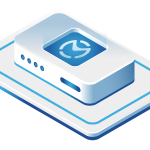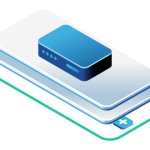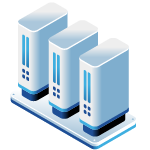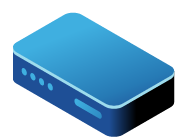In this article
- What is Big Data?
- Real-World Examples of Big Data in Action
- Why CTOs and SREs Should Take Advantage of Open Source Big Data Tools
- Popular Open Source Big Data Tools
- Challenges of Open Source and How to Overcome Them
- Skills to Take On the Future of Big Data
- Wrapping Up: Big Data, Open Source, and You!
- Get Started on OpenMetal for Your Big Data Project
Big data has been, and continues to be, dramatically reshaped by the rise of open source tools. This shift is especially affecting the roles and responsibilities of CTOs (Chief Technology Officers) and SREs (Site Reliability Engineers), who now have to manage increasingly complex and distributed data systems and find ways to optimize their usage.
What is Big Data?
Imagine a firehose gushing out a massive amount of water. That’s a good visual metaphor for big data – huge amounts of information being created every second from sources like websites, social media, and even your phone.
Why is Big Data Important?
Big data can help us understand the world better and steer decision-making. Businesses use it to make important choices, scientists use it to discover new things, and governments use it to improve people’s lives.
How Big Data Works
Working with big data involves a series of steps, each requiring specialized tools and techniques:
- Collect Data: Gathering information from diverse sources is the first step. This can include structured data from databases (e.g., customer transactions), semi-structured data like JSON or XML files (often from APIs), and unstructured data such as text from social media or sensor readings. Tools like Apache Flume or Apache Kafka can be used for ingesting streaming data.
- Store Data: Big data needs a place to live. Traditional databases often struggle with the volume and variety of big data. Distributed file systems like Hadoop Distributed File System (HDFS) are commonly used for storing massive datasets. Cloud-based storage solutions like Amazon S3 or Azure Blob Storage are also popular. We love the powerful and flexible Ceph storage platform here at OpenMetal. NoSQL databases, like Cassandra or MongoDB, are often used for specific types of big data, especially when flexibility and scalability are paramount.
- Process Data: Raw data is rarely useful. It needs to be cleaned, transformed, and prepared for analysis. This is where Extract, Transform, Load (ETL) or the more modern ELT (Extract, Load, Transform) processes come in. Tools like Apache Spark are used for data transformation and processing at scale. Data cleaning might involve handling missing values, removing duplicates, and correcting inconsistencies.
- Analyze Data: Once the data is processed, we can start to extract insights. This involves using statistical methods, machine learning algorithms, and data mining techniques to identify patterns, trends, and anomalies. For example, predictive modeling can be used to forecast future customer behavior, while clustering algorithms can group similar data points together.
- Visualize Data: The final step is to present the findings in a way that is clear and understandable. Data visualization tools like Tableau, Power BI, or even libraries like Matplotlib in Python allow us to create charts, graphs, and dashboards that communicate insights.
Real-World Examples of Big Data in Action
- Recommendation Systems: Companies like Netflix and Amazon use big data to recommend movies, TV shows, and products to their customers.
- Self-Driving Cars: Self-driving cars rely on big data to make decisions about how to navigate roads and avoid accidents.
- Healthcare: Big data is being used to develop new treatments for diseases and improve patient care.
- Climate Change: Scientists use big data to study climate change and predict future trends.
Our Own Real-World Example: Cybersecurity Firm Creates High-Performance ClickHouse Deployment on OpenMetal
A cybersecurity firm faced the challenge of ingesting and analyzing massive streams of security event data with extremely low latency while also providing long-term data retention for compliance and historical analysis.
They chose OpenMetal’s hybrid architecture, combining bare metal servers and an OpenStack-powered private cloud along with Ceph storage, to deploy a high-performance ClickHouse cluster. This allowed them to optimize performance for different areas of the ClickHouse stack and deliver a powerful platform for real-time analytics, providing insights for their clients’ foundational security operations.
Read the full case study >>
Why CTOs and SREs Should Take Advantage of Open Source Big Data Tools
In the past, proprietary solutions dominated the big data scene. Today, open source tools like Hadoop, Spark, Kafka, and others have democratized data and made setting up your own big data platform more accessible (big shout out to The Apache Software Foundation for supporting a ridiculous amount of these open source tools!) Every organization now has a wealth of options available to build their own custom solutions.
Why Open Source? Benefits for CTOs and SREs
While proprietary solutions of course still exist, the shift towards open source tools offers major advantages for CTOs and SREs:
Cost Savings
Open source tools are generally free to download and use, which can reduce the cost of building and maintaining a big data platform. However, it’s important to consider potential costs associated with support, maintenance, migration, training, integration, and cloud infrastructure. This is especially important for startups and smaller organizations with limited budgets.
Flexibility and Customization
Open source tools allow for a great deal of flexibility and customization. CTOs and SREs can modify code to meet their specific needs and integrate with existing systems. This level of control is often not possible with proprietary solutions. For example, a healthcare organization could adapt an open source LLM (Large Language Model) like Mistral by training it on their own medical datasets, incorporating specific terminology and aligning the model’s responses with their clinical protocols.
Community Support
Open source projects have large and active communities of developers who contribute to the codebase, provide support, and share knowledge. CTOs, SREs, and even individual users can tap into a wealth of expertise and resources when they need help.
Increased Security and Transparency
In line with the above, that large community of open source developers can quickly identify and address security vulnerabilities. This collaborative approach to security can lead to more secure and reliable systems.
Just remember that while the open source development model can lead to faster identification and resolution of vulnerabilities, that doesn’t mean inherent security. Be sure to implement strong security practices, conduct regular audits, and perhaps even have outside cybersecurity firms evaluate your level of protection.
Vendor Independence and Easy Integration
By using open source tools, CTOs and SREs can avoid vendor lock-in. They are not tied to a single vendor and can switch to a different solution if needed. Open source tools often allow easy integration and interoperability with other software, both open source and proprietary, as well.
Open Source Adoption Strategies for Leaders
CTOs, SREs, and other IT leaders can approach open source adoption in different ways, depending on their organization’s needs and resources. Here are three archetypes to consider:
Taker
Uses publicly available models through a chat interface or an API with minimal customization. This is the simplest approach and works for off-the-shelf solutions like GitHub Copilot for code generation or Adobe Firefly for design assistance.
Example: A marketing team using a pre-trained image generation model (e.g., Stable Diffusion) via a web interface to create marketing materials. They make minimal adjustments to the prompts and use the model as-is.
Shaper
Integrates models with internal data and systems for more customized results. This involves fine-tuning models with internal company documents or connecting them to CRM and financial systems. This approach is ideal for companies wanting to scale generative AI capabilities or meet specific security and compliance needs.
Example: A financial services company fine-tuning a large language model (LLM) with their internal financial data to build a chatbot that can answer customer questions about their accounts. They integrate the LLM with their CRM system.
Maker
Builds a foundation model to address a discrete business case. This requires significant investment in data, expertise, and compute power. This option is suitable for organizations with unique requirements and substantial resources.
Example: A healthcare organization developing a custom foundation model trained on medical images and patient records to improve the accuracy of disease diagnosis. They are required to build and invest in custom solutions and a complex new infrastructure.
Popular Open Source Big Data Tools
Here’s a summary of some key open source tools and their primary functions that you may want to consider for your big data needs:
| Tool | Function | Why It’s Used |
|---|---|---|
| Hadoop | Distributed storage and processing | Designed for batch processing of very large datasets. HDFS provides fault-tolerant storage, and MapReduce is a programming model for parallel processing. |
| Spark | Fast, general-purpose cluster computing system | Ideal for real-time and near real-time data processing, machine learning, and interactive queries. Offers faster performance than Hadoop for many workloads. |
| Kafka | High-throughput, fault-tolerant distributed streaming platform | Used for building real-time data pipelines and streaming applications. Enables the ingestion and processing of data streams from multiple sources. |
| NiFi | Data flow management | Enables the building, automation, and management of data flows between different systems. Useful for ETL processes and integrating various data sources. |
| Hive | Data warehouse software built on top of Hadoop for providing data query and analysis | Provides an SQL-like interface to query data stored in Hadoop. Translates SQL queries into MapReduce jobs. Good for analytical queries on large datasets. |
| Presto | Distributed SQL query engine for interactive analytic queries against large data sources ranging in size from gigabytes to petabytes | Designed for fast SQL queries on various data sources, including Hadoop, NoSQL databases, and cloud storage. Suitable for interactive data exploration. |
| HBase | NoSQL, column-oriented database that runs on top of Hadoop | Designed for random, real-time read/write access to large datasets. Suitable for applications that require low-latency data access. |
| Cassandra | NoSQL, distributed, wide-column store database | Highly scalable and fault-tolerant. Used for applications that require high availability and can handle massive amounts of data. |
| Flink | Open source stream processing framework for distributed, high-performance dataflow | Offers both batch and stream processing capabilities. Suitable for real-time analytics and event-driven applications. |
| ClickHouse | Column-oriented, high-performance DBMS for online analytical processing (OLAP) | Specifically designed for fast analytical queries on large volumes of data. Excellent for real-time reporting, dashboards, and ad-hoc analysis. Optimized for read-heavy workloads. |
| Distributed real-time computation system | Used for processing streams of data in real-time, with high throughput and low latency. Especially suitable for applications like fraud detection, log processing, and sensor data analysis. |
Challenges of Open Source and How to Overcome Them
While open source has plenty of benefits, CTOs and SREs should always be aware of potential hurdles.
Deployment and Configuration
Deploying and configuring open source big data tools can be complex and time-consuming, and often requires specialized technical expertise. For example, setting up a Hadoop cluster involves configuring various components like HDFS (Hadoop Distributed File System) and YARN (Yet Another Resource Negotiator), which can be challenging for those unfamiliar with the technology.
Solution: Leverage platforms like OpenMetal that provide automation tools, engineer support, and a platform where you can spin up new clouds in under a minute. Automation tools like Terraform and Ansible can further streamline provisioning and configuration of infrastructure.
Monitoring and Management
Keeping large-scale big data systems healthy and performing well can be a challenge. With many different components and distributed architectures, monitoring and managing these systems require specialized tools and expertise. As one example, monitoring a Spark cluster involves tracking various metrics like executor health, job progress, and resource utilization. Identifying the root cause of a slow-performing job can be challenging without the right monitoring tools and expertise.
Solution: Take advantage of monitoring and management tools like Prometheus and Grafana for real-time insights and proactive problem-solving abilities. These tools allow for collecting and visualizing real-time metrics from your big data pipeline, helping you identify and address potential issues before they impact performance.
Security and Compliance
Protecting sensitive data and adhering to industry regulations is an ongoing task. Open source tools may require additional security measures to ensure data protection and compliance with industry standards. For instance, securing a Kafka cluster involves implementing authentication and authorization mechanisms to control access to sensitive data streams. Maintaining compliance with regulations like GDPR or HIPAA requires careful configuration and data governance policies.
Solution: Choose platforms with strong security features and compliance certifications like ISO 27001 and SOC 2. OpenMetal adheres to industry standards including HIPAA, ensuring compliance with many regulatory requirements.
Cost Optimization
Managing the costs associated with big data infrastructure can be difficult, especially as data volumes grow. Things like scaling a cloud-based Spark deployment can lead to unexpected costs if not managed effectively. Over-provisioning resources or using inefficient data storage formats can quickly increase cloud spending.
Solution: Opt for platforms with flexible pricing models and resource optimization capabilities. OpenMetal offers flexible pricing options and agreement terms, allowing you to fine-tune performance while keeping costs reasonable and predictable.
Open Source Licensing
While open source tools are often free to acquire, there are different licensing models that govern their use and modification. Common licenses include:
- GPL (GNU General Public License): Requires that derivative works also be open-sourced under the same license.
- Apache License: Permissive license that allows for both commercial and non-commercial use, with fewer restrictions than GPL.
- MIT License: Very permissive license with minimal restrictions on use and modification.
Solution: Choosing the right open source license depends on your organization’s needs and policies. When you’re planning out what’s needed in your big data platform and the solutions that may be a fit, take time to note which licensing model is associated, and check with your legal team to make sure you’re following their requirements.
Skills to Take On the Future of Big Data
Technology’s continual advancement means that big data will only grow and tools will evolve. The role of CTOs and SREs will likewise change and become even more important. By understanding big data and the tools available to manage it, you can prepare yourself for whatever comes.
Here are some specific skills that CTOs and SREs should continue to hone to succeed in the age of big data:
- Programming: Proficiency in languages like Python (for data science and scripting), Java or Scala (for big data processing), and SQL (for data querying).
- Data Engineering: Skills in data collection, cleaning, transformation, and storage. Experience with tools like Apache Airflow (for workflow orchestration), dbt (for data transformation), and various data storage technologies (e.g., relational databases, NoSQL databases, data lakes).
- Data Analysis: Understanding of statistical methods, machine learning algorithms, and data visualization techniques. Experience with data analysis tools and libraries (e.g., Pandas, Scikit-learn, TensorFlow).
- Cloud Computing: Experience with cloud platforms including public ones such as AWS, Azure, and Google Cloud, along with private and open source cloud platforms like OpenStack.
- Security: Knowledge of cybersecurity best practices to protect sensitive data.
Wrapping Up: Big Data, Open Source, and You!
By using open source tools and hosting platforms like OpenMetal, IT leaders like CTOs and SREs can streamline operations, reduce costs, and fully tap into the power of their data. Open source offers significant advantages – cost savings, flexibility, community support, increased security, and vendor independence. Be ready to tackle the few challenges that come with open source and you’ll have no problem gaining its benefits!
Schedule a Consultation
Get a deeper assessment and discuss your unique requirements.
You can also reach our team at sales@openmetal.io
Read More on the OpenMetal Blog




































